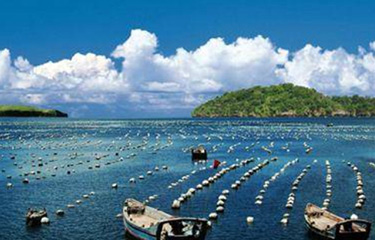China’s changing consumer market shifts aquaculture investment playing field

The flow of aquaculture technology and investment dollars into and out of China has shifted as the country has undergone a shift from a producer nation to a net importer of seafood.
China’s seafood industry has struggled in its efforts to expand abroad through acquisitions, but its overseas investments in greenfield projects in developing nations have found more success.
Bangkok, Thailand-based American consultant Lukas Manomaitis, who has advised on aquaculture and feed projects in Africa and Asia, said Chinese aquaculture investors, even small-scale firms, have made solid inroads in Africa.
“The Chinese brought in the technology, the species, they trained people and just did it,” he told SeafoodSource. “I heard it several times in my work there – in Kenya, Ghana and Zambia – [where] the Chinese were first-movers.”
Chinese aquaculture firms have shown a unique ability to build out and unify various parts of the value chain in hubs, including feed mills, tilapia seedlings, and manpower, according to Manomaitis.
“The main characteristic is that Chinese move fast,” he said.
The existing scale of China’s own domestic aquaculture sector, coupled with a long tradition of using ethnic Chinese business networks both influence Chinese business models when setting up abroad, may explain the relative reluctance from Chinese companies to invest in existing assets abroad, Manomaitis said.
“They don’t need to invest in others. They can invest in their own production approaches and control the lot,” he said.
The vast global network of ethnic Chinese business communities has helped to elevate China into a seafood powerhouse. Among the earliest foreign multinationals to invest in China was Bangkok, Thailand-based conglomerate CP Foods, which was founded by an ethnic Chinese family and which now has a vast footprint in China.
Environmental and economic bottlenecks have limited Chinese aquaculture investments in aquaculture abroad, according to ”Swimming Upstream: Assessing China’s Overseas Investment Push for Aquaculture” published by Boston University’s Global Development Policy Center, which has developed an expertise in tracking Chinese foreign direct investment.
Protests by locals in Sierra Leone and Gambia over fishmeal plants built by Chinese investors shows that “effective government management of environmental and social risk is a potential bottleneck” for Chinese investors, according to the report.
The report also suggests challenges in “establishing appropriate protections to mitigate risks [and] economic bottlenecks in effectively linking new investments to host country’s development goals.”
For an example, the report cites China’s reach into the Philippines, where its donations of grouper seedlings didn’t sync with local consumer preferences, but did meet a Chinese demand for high-value coral fish. Moreover, the project didn’t meet a Philippines government goal of creating local processing jobs, as most of its fish are exported live to China.
China’s government has had more success in exercising soft power through the provision of aquaculture training and support to developing countries, with explicit promises of access to the Chinese market. In 2018, China established the Tropical Countries Aquaculture Science and Technology Innovation Cooperation Project, which extends Chinese aquaculture training to Pacific Island nations and other equatorial countries.
An underlying barrier to Chinese investment in seafood businesses abroad is the issue of ...
Photo courtesy of China Oceanic Development Foundation





Share